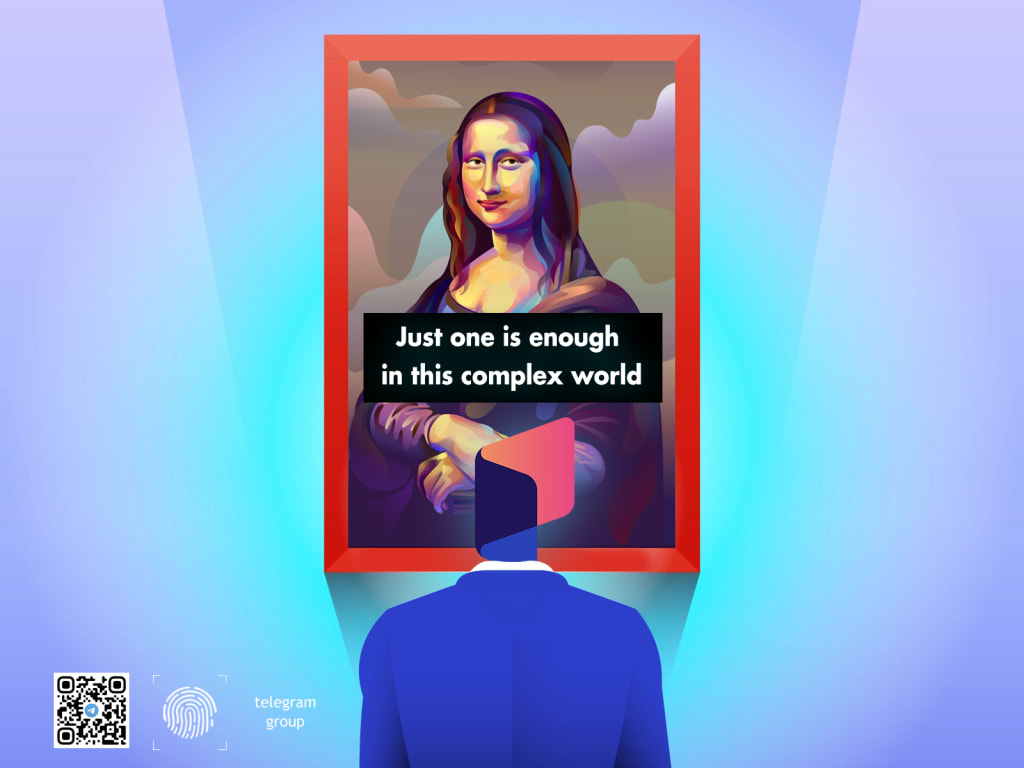How Does CHAIR Create the New ‘Rarities’
first DEX for utility NFT

On the evening of March 11th, Christie’s, the world-famous auction house successfully sold Beeple’s ‘Everydays: The First 5000 Days’ . This is the first digital artwork NFT ever offered by a major auction house. The artwork hammered for $69.34 million, blasting NFT art records and making Beeple the third most valuable living artist just after Jeff Koons and David Hockney.
The record-smashing sale turned the spotlight on NFT and put it on the center stage to tickle everyone’s fancy. NFTs have become the hottest topic with extensive media coverage and heated discussions. Numerous NFT exhibitions quickly proliferated like spring bamboos. NFT, a term first emerged in the crypto industry as early as 2017, has unexpectedly risen to fame.
What is NFT?
NFT stands for non-fungible tokens, it is an irreplaceable token with rarity as its core feature.
In economic theory, fungibility refers to the mutually interchangeable property of identical items. Currency is a great example of fungibility. One 10-pound note can be exchanged for two 5-pound notes because they possess the same value. The same conversion is impossible for non-fungible items because each non-fungible item is unique.
NFTs could represent a house or a specific painting. For example, Mona Lisa is one of a kind. You can take as many pictures as you want of the Mona Lisa painting or even print millions of copies, but the original painting will always be the one and only. NFTs are the unique assets in the digital world. They can be traded like other assets despite having no tangible forms of their own. Digital tokens can function as ownership certificates of virtual or physical assets.
Surprised by the sudden popularity of NFTs, some people believe that NFT is just a bandwagon built upon market speculation. Evidently, a bubble did exist in the current NFT market, but is this the whole story?
All artworks existed in their physical forms before the emergence of digital art. Your ownership of a piece of physical art means that you have the rights to possess, use, profit from, and dispose of it. You can hang it in a bedroom, show it to others or sell it. The ownership rights are absolute, exclusive, and permanent.
However, things are completely different in the era of digital economy: How can we prove our exclusive possession of digital artworks when they have no physical forms? How can we protect our rights to dispose of or profit from them in the case where someone else replicates your artworks? Is there a way to apply NFT to broader scenarios, instead of limiting NFT to niche markets such as gaming, crypto art, and card collection? Can we enhance the liquidity of NFTs if NFTs are applied in the mass market and become available for the average users?
How does NFT work?
The debate over the value of NFTs is becoming increasingly heated, Rarity, a key attribute of NFTs, has emerged at the center of all kinds of discussions. Rarity generates value, but where does value come from in a world overabundant with surplus? How can NFTs win over the mass market if it does not possess unique value? With this ideology in mind, people begin to discover and create new rarities.
Traditional artworks, such as paintings, are valuable because they are unique. However, digital artworks are easily replicable. With the help of the NFT technology, nontangible rights and benefits can be tokenized into NFTs and thus act as a tradable certificate of digital ownership. The ownership records are stored on shared ledgers called blockchain, as is the case with cryptocurrency. These records cannot be forged because the ledgers are maintained by millions of computers around the world.
As mentioned above, the concept of NFT first emerged as early as three years ago. The so-called NFT application is by no means limited to merely tokenizing a photo or a painting. When the average people are still curious about what NTF is, the cryptocurrency insiders are already exploring practical NFTs applicationz in broader fields.
The very existence of every human being is a combination of rarity and various rights and benefits. Oftentimes more value can be derived from further division and tokenization of personal rights and benefits. It would be ideal if there is a platform to provide one-stop services for NFT minting, trading, and auctioning, thereby improve the liquidity and economic value of NFT. CHAIR is such a platform where new rarities are created on the basis of personal rights and benefits, minted as NFT, and entered into trades or auctions to achieve better liquidity for the NFT.
How are NFTs minted?
So how are assets transformed into NFTs? CHAIR simplifies the whole process so that users can easily complete the operation without studying blockchain knowledge.
For example, KOLs can certify and upload any digital asset on the Ethereum blockchain, including artworks, tweets, music, and personal rights. This NFT minting process is also called ‘tokenization’. With this process, any asset can be coded into NFT with a verifiable archive of price, ownership, and transaction records. This record is tamper-proof and irreplicable..
Once uploaded, NFTs will be forever stored on the blockchain as long as the chain remains in existence. Because every NFT has its own unique digital property, no two NFTs are identical
What can NFT bring to the market?
Perfect Proof of Stake!
Stored on the blockchain, every NFT is a unique asset which ownership is managed and verified through blockchain. Unlike bitcoins, there is no substitute for every single NFT, it is also indivisible. Digital ownership means that the collectors can freely access their NFT collections at any time. Ownership of digital assets is highly valuable in its own right. Almost anything can be tokenized, from collectibles to games, artworks, personal rights, and ownership records of physical assets.
Theoretically speaking, if we tokenized rights and benefits into NFT and create a brand new trading system with the decentralized technological philosophy, any individual or enterprise could mint, trade, and auction NFTs. Buyers can directly access the rights and benefits of theirNFTs. Token rules will be established with smart contract. Users can verify NFT ownership based on blockchain information. This makes it much easier for average users to participate in the NFT world. Platform tokens are purchased to redeem NFTs so as to acquire the future rights and benefits of NFT and to enjoy the trading dividends. NFT holders will be able to execute limit order sale, auction, and transfer of NFTs. This is an effective and convenient Proof of Stake method.
The theory of modern property ownership from new institutional economics tells us that in a market with efficient resource allocation, all rights and benefits must be specific, exclusive, transferable, and operable. The NFT of the digital economies era meets all the requirements: NFTs provide unique PoS for artwork creators so that the original work is always distinguishable from other replicas even in electronic form. The ownership of NFTs is absolutely exclusive which effectively protects creators’ copyrights. NFTs can be traded easily and conveniently on blockchain network. NFTs will make it easier for the creator to fetch an ideal price for their works, thus motivates creators to produce more high-quality artworks.
Rights and benefits NFTs can be freely traded and transferred peer to peer. Every transaction is transparent and traceable on blockchain. this greatly improves the efficiency of NFT circulation. Underpinned with blockchain’s innate advantages, NFTs are born to be tamper-proof. NFT holders of KOL rights can freely trade and auction their NFTs at a premium. KOLs can also earn a certain amount of income from each successful transaction, thus achieve maximum monetization of traffic. NFT buyers will never need to worry about authenticity.
Back to reality, why are cryptocurrency insiders willing to research and even invest large amounts of money in the market to promote NFT?
The above-mentioned rarity is the core value of NFTs. KOLs can mint any rights or benefits into NFTs and independently determine the quantity of NFT to guarantee the rarity of the NFTs. The rarity of KOLs’ rights indicates that they possess higher monetization and propaganda value.
CHAIR offers three kinds of rights and benefits NFTs. Firstly, CHAIR users can tokenize personal behavioral rights. KOLs can tokenize their rights and benefits into NFTand sell them to followers. The NFT holders can enjoy the rights and benefits represented by the NFTs so as to satisfy their needs and self actualization.
For example, Warren Buffet could mint his annual lunch spot as an NFT token and have it auctioned on CHAIR. Whoever won the NFT in the auction will be entitled to sharing a lunch with Mr. Buffet. In fact, the behavioral rights NFT in this scenario brings about higher monetization value, which means that the KOL could monetize their influence more efficiently. The higher the circulation value is, the better the KOL can promote targeted communication.
CHAIR infuses rarity with rights and benefits. The competition for NFT is also an interesting experience for the users. This is not uncommon in the digital era. Some people have the bias that only physical items are worth collecting, virtual ones don’t. In fact, physical items and virtual items are basically the same things because both item types involve feelings and experiences.
As discussed above, NFT creates rarity. When something is rare, it becomes precious and pricey, this is an important economic principle. All of these rarities are created on purpose, which is not unusual. With the development of the digital economy, the fact that NFTs are only beginning to empower our personal rights recently is more surprising than the sudden breakthrough of NFTs. We can witness that more and more people are attempting to create unique value in the form of NFT. For some, this day cannot come soon enough.
About the Creator
Sarah Tsai
CHAIR is the world's first decentralized trading platform for utility NFTs. CHAIR tokenizes "rights and benefits" into NFTs and establishes a brand new NFT trading system to improve asset liquidity and economic efficiency.






Comments
There are no comments for this story
Be the first to respond and start the conversation.